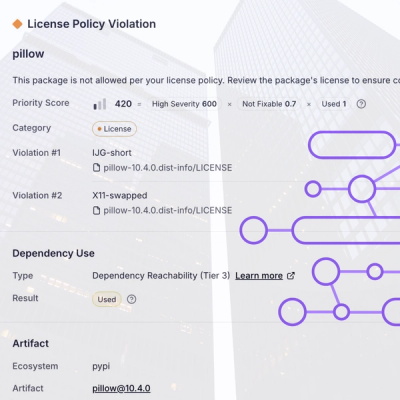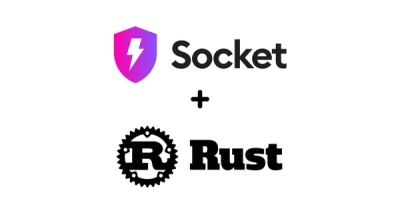
Research
/Security News
Critical Vulnerability in NestJS Devtools: Localhost RCE via Sandbox Escape
A flawed sandbox in @nestjs/devtools-integration lets attackers run code on your machine via CSRF, leading to full Remote Code Execution (RCE).
@sap/html5-app-deployer
Advanced tools
HTML5 application deployer handles the upload of the HTML5 applications content to the HTML5 application repository.
The @sap/html5-app-deployer module is consumed as a dependency in a node.js CF application.
For example:
{
"name": "myAppDeployer",
"engines": {
"node": ">=6.0.0"
},
"dependencies": {
"@sap/html5-app-deployer": "2.0.1"
},
"scripts": {
"start": "node node_modules/@sap/html5-app-deployer/index.js"
}
}
Below the root folder, the HTML5 applications deployer app can contain a "resources" folder for the static files of the HTML5 application.
For example:
cf create-service html5-apps-repo app-host myApps-app-host
If no "resources=" tag is provided HTML5 application deployer will still try to upload files from resources folder. If no resources folder is found,the upload will fail.In the resources folder there should be one folder or one zip archive for each application that should be uploaded. In each application folder/zip archive there should be two files at root level: manifest.json and xs-app.json.
For example:
myAppsDeployer
+ node_modules
- resources
- app1
index.html
manifest.json
xs-app.json
- app2
...
package.json
manifest.yaml
The manifest.json file should contain at least sap.app.id and sap.app.applicationVersion.version.
Note that sap.app.id and sap.app.applicationVersion.version are used in the HTML5 application repository as applicationName and applicationVersion. If sap.app.id contains dots or dashes, they will be removed in the applicationName. The version format must be xx.xx.xx, whereas x is a digit. For example: 1.0.10
Note that different app-host service instances cannot be used to upload applications with the same application id/name.
For example:
manifest.json
{
"_version": "1.7.0",
"sap.app": {
"id": "app1",
"type": "application",
"i18n": "i18n/i18n.properties",
"applicationVersion": {
"version": "1.0.0"
}
}
}
The xs-app.json file that can be used by the application router to support application routing. For example:
xs-app.json
"welcomeFile": "index.html",
"authenticationMethod": "route",
"routes": [
{
"source": "^/be(.*)",
"target": "$1",
"destination": "mybackend"
},
{
"source": "^(/.*)",
"target": "$1",
"service": "html5-apps-repo-rt"
}
]
}
The @sap/html5-app-deployer consumer application should be bound to a single html5-apps-repo service instance of the app-host service plan. When the @sap/html5-app-deployer consumer application is started, the @sap/html5-app-deployer module creates a zip archive for each folder in the “resources” folder - if it is not zipped already - and triggers the upload of all zip archives to the HTML5 application repository via multi-part request.
To deploy an sap/html5-app-deployer consumer application in the Cloud Foundry environment you can choose one of the following procedures:
applications:
- name: myAppsDeployer
no-route: true
memory: 128M
services:
- myApps-app-host
cf create-service html5-apps-repo app-host myApps-app-host
cf push -f manifest.yaml
After @sap/html5-app-deployer consumer application has uploaded the content successfully, stop the application to avoid using up CF container resources.
cf stop myAppsDeployer
To use cf deploy the installation of the deploy plugin is required, see deploy plugin documentation In addition, create an *.mtar archive using WebIDE or MTA Build Tool.
The MTA project should have an mtad.yaml file in the following format:
ID: myApps.deployer //MTA ID
_schema-version: '2.0'
version: 0.0.3
modules:
- name: myAppsDeployer
type: com.sap.html5.application-content
path: deployer/
requires:
- name: myApps-app-host
resources:
- name: myApps-app-host //Resource name
type: org.cloudfoundry.managed-service
parameters:
service: html5-apps-repo //Service name
service-plan: app-host //Service plan
service-name: myApps-app-host //Service instance name
Use the WebIDE build or the MTA Build Tool to generate a valid myAppDeployer.mtar file.
cf deploy myAppsDeployer.mtar
After deploying the *.mtar file, an application called myAppsDeployer (stopped) is shown in cf apps.
When you undeploy the HTML5 application deployer app using MTA ID, the related HTML5 application repository content should be deleted too.
If you have used the cf push command to deploy the app, delete the HTML5 application deployer app manually:
For example:
cf unbind-service myAppsDeployer myApps-app-host
This step deletes the HTML5 application respository content. For example
cf delete-service myApps-app-host
This step deletes the HTML5 application repository content.
For example:
cf delete myAppsDeployer
When you undeploy the HTML5 application deployer app, the HTML5 application deployer app is deleted and you can - in the same step - delete the app-host service instance of the html5-apps-repo. To delete the app-host service instance of the html5-apps-repo, the --delete-service parameter should be passed. Note that the undeploy requires the mta id, which can be obtained by calling cf mtas or from the mtad.yaml ID.
For example:
cf undeploy myApps.deployer --delete-services
After making changes to the static content files of HTML5 applications, the new content can be redeployed to the HTML5 application repository. All content referenced by the app-host service instance id is replaced by the new content.
FAQs
HTML5 application deployer
The npm package @sap/html5-app-deployer receives a total of 12,797 weekly downloads. As such, @sap/html5-app-deployer popularity was classified as popular.
We found that @sap/html5-app-deployer demonstrated a healthy version release cadence and project activity because the last version was released less than a year ago. It has 0 open source maintainers collaborating on the project.
Did you know?

Socket for GitHub automatically highlights issues in each pull request and monitors the health of all your open source dependencies. Discover the contents of your packages and block harmful activity before you install or update your dependencies.

Research
/Security News
A flawed sandbox in @nestjs/devtools-integration lets attackers run code on your machine via CSRF, leading to full Remote Code Execution (RCE).

Product
Customize license detection with Socket’s new license overlays: gain control, reduce noise, and handle edge cases with precision.

Product
Socket now supports Rust and Cargo, offering package search for all users and experimental SBOM generation for enterprise projects.